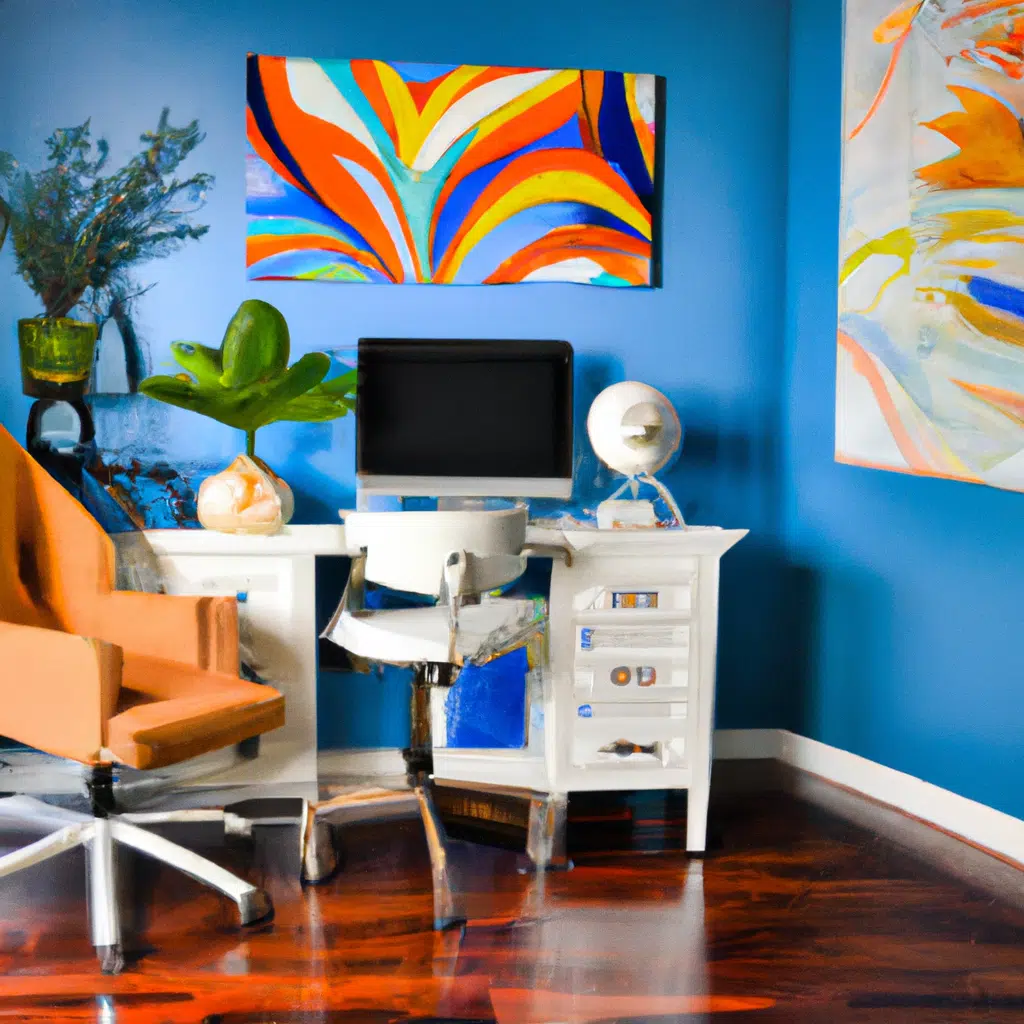
Creating a productive and inspiring home office space is essential for those who work remotely or engage in personal projects. One powerful way to transform your home office is by utilizing the concept of complementary colors. Complementary colors are pairs of colors that, when combined, create a striking and harmonious visual effect. In this article, we will explore the energizing potential of complementary colors and how they can be effectively incorporated into your home office design. By understanding the psychology behind colors and implementing the right color combinations, you can create a space that promotes focus, creativity, and productivity.
Understanding Complementary Colors
Complementary colors are colors that sit opposite each other on the color wheel. These pairs create a strong contrast when placed together, making them visually appealing and attention-grabbing. The primary complementary color pairs are:
- Red and green
- Blue and orange
- Yellow and purple
When complementary colors are used together, they intensify each other, creating a dynamic and vibrant visual experience. This effect can be harnessed to stimulate specific emotions and enhance the atmosphere of your home office.
The Psychology of Complementary Colors
Colors have a profound impact on our emotions, moods, and productivity levels. Understanding the psychology behind colors can help you select the right color scheme for your home office. Here’s a breakdown of the psychological effects of the primary complementary color pairs:
Red and Green
The combination of red and green creates a visually stimulating environment. Red is known to increase energy levels, stimulate creativity, and promote a sense of urgency. On the other hand, green is associated with balance, tranquility, and harmony. By combining these colors in your home office, you can achieve a dynamic balance that fosters both productivity and a calm state of mind.
Blue and Orange
Blue is often associated with productivity, focus, and a sense of tranquility. It has a calming effect and can help reduce stress levels. Orange, on the other hand, is a warm and energetic color that promotes enthusiasm and creativity. By incorporating blue and orange into your home office design, you can create a space that encourages both concentration and innovation.
Yellow and Purple
Yellow is a color that evokes feelings of joy, optimism, and positivity. It is known to stimulate mental activity and enhance creativity. Purple, on the other hand, is associated with luxury, spirituality, and imagination. By combining yellow and purple in your home office, you can create an environment that inspires imagination, boosts productivity, and uplifts your mood.
Implementing Complementary Colors in Your Home Office
Now that we have explored the psychology behind complementary colors, let’s delve into how you can effectively incorporate them into your home office design:
1. Choose a Dominant Color
Start by selecting a dominant color for your home office. This color will serve as the foundation for your design and will set the overall mood of the space. Consider the psychological effects of each complementary color pair and choose the one that aligns with your desired ambiance.
2. Accentuate with Complementary Colors
Once you have chosen a dominant color, accentuate it with its complementary color. This can be done through furniture, accessories, accent walls, or artwork. By strategically placing pops of the complementary color throughout your home office, you can create a visually stimulating and harmonious environment.
3. Play with Shades and Tones
To add depth and dimension to your home office, experiment with different shades and tones of your chosen colors. Lighter shades can create an airy and spacious feel, while darker tones can add a sense of richness and warmth. By incorporating a variety of shades, you can create a visually captivating and balanced space.
4. Consider Lighting
Lighting plays a crucial role in enhancing the visual impact of your home office. Natural light is highly recommended as it promotes overall well-being and reduces eye strain. Additionally, the way light interacts with your chosen colors can create unique effects. Experiment with different lighting options to find the perfect balance and showcase the beauty of your color scheme.
5. Maintain Balance
While complementary colors create a strong contrast, it is important to maintain a sense of balance in your home office design. Avoid overwhelming the space with too much of one color. Instead, aim for a harmonious blend that promotes productivity and relaxation.
6. Personalize Your Space
Lastly, don’t forget to infuse your own personality and style into your home office. Consider incorporating additional colors, textures, and decor elements that resonate with you. This personal touch will make your space feel truly unique and inspiring.
Conclusion
Incorporating complementary colors into your home office design can have a powerful impact on your productivity, creativity, and overall well-being. By understanding the psychology behind colors and implementing the right color combinations, you can transform your workspace into an energizing environment that fuels your success. Remember to choose a dominant color, accentuate with its complementary color, play with shades and tones, consider lighting, maintain balance, and personalize your space. With these tips in mind, you’ll be well on your way to creating a home office that inspires and motivates you to reach new heights.

